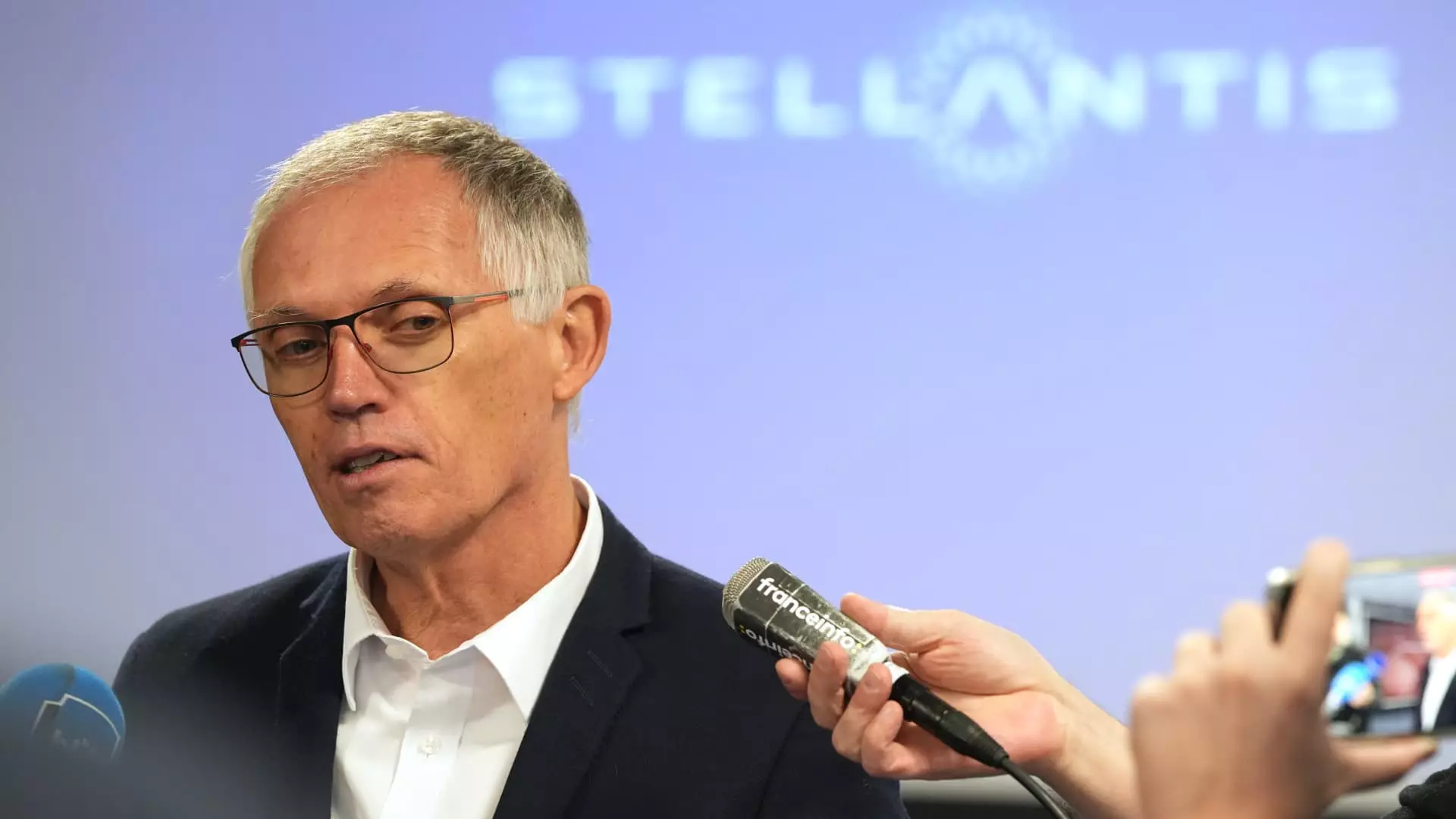In a surprising turn of events, Carlos Tavares, the CEO of Stellantis, has resigned from his position effective immediately, a decision accepted by the company’s board of directors. The automaker, which emerged from the merger of Fiat Chrysler Automobiles and PSA Groupe in 2021, has stated that the decision is rooted in “different views” between Tavares and the board. The resignation highlights a significant disconnect within the leadership of one of the world’s largest car manufacturers, raising questions about the future direction of the company.
The board is currently in the process of appointing a new CEO, a search that is expected to conclude by the end of the first half of the following year. In the interim, John Elkann, the chairman of Stellantis, will head a newly established executive committee to steer the company through this transitional phase. This swift leadership change not only reflects internal conflicts but also underscores the growing pressure on Stellantis to navigate mounting financial challenges.
Tavares’ resignation comes just a few months after the announcement of his planned retirement in 2026, suggesting that tensions within the company had been brewing for some time. It is worth noting that his leadership was initially hailed as instrumental in navigating the merger that formed Stellantis. However, his tenure was marred by financial underperformance in 2023, particularly within the crucial U.S. market, which has historically served as Stellantis’ primary source of revenue.
Recent financial reports have painted a bleak picture for the automaker. Following the announcement of slashed annual guidance targets, Stellantis experienced a staggering 27% drop in third-quarter net revenues. The situation is exacerbated by a 20% decrease in year-over-year global vehicle sales, indicating not just a decline but a prolonged downturn that has left the company struggling to regain its footing. This performance likely contributed to mounting pressure from stakeholders and a restive board seeking more decisive action.
During his tenure, Tavares made aggressive cost-cutting a cornerstone of Stellantis’ strategy, aiming to achieve savings of approximately €8.4 billion (about $9 billion). While such measures may have temporarily bolstered profit margins, they prompted serious concerns about the company’s long-term viability and operational integrity. Critics, including current and former executives, have described these cost reductions as excessively stringent, leading to operational disruptions primarily in the U.S. market.
The backlash against Tavares has not been limited to internal critiques; external pressures have also mounted. The United Auto Workers union has vocally opposed Tavares’ leadership, pointing to job cuts and bloated inventories as clear indicators of mismanagement. Stellantis’ U.S. dealership network has echoed these sentiments, expressing frustration over a perceived lack of support from the corporate structure in managing vehicle sales.
Investing in the Future: Challenges Ahead
As Stellantis prepares for its next phase of leadership, the challenge remains to restore investor confidence while addressing the operational hiccups that led to Tavares’ abrupt departure. The need for innovation and reinvestment in new product lines is more pressing than ever. The automotive industry is rapidly evolving, with electric vehicle technology and sustainability taking center stage. Failing to adapt could further alienate Stellantis from its consumer base.
The incoming CEO will face the daunting task of repairing relations with stakeholders, including labor unions and dealership networks, while also spearheading a turnaround strategy aimed at revitalizing the company’s market performance. Balancing these competing demands requires not only a strategic vision but also an ability to foster cooperation among a diverse set of interests within and outside of Stellantis.
The resignation of Carlos Tavares marks a pivotal moment for Stellantis as it seeks to reclaim its competitive edge in a challenging automotive landscape. As the company embarks on a quest for new leadership, the decisions made in the coming months will determine whether Stellantis can navigate its current financial hurdles and position itself for future success. The road ahead is fraught with challenges, but with the right leader at the helm, there is potential for a renewed sense of purpose and growth within one of the world’s leading automotive giants.

